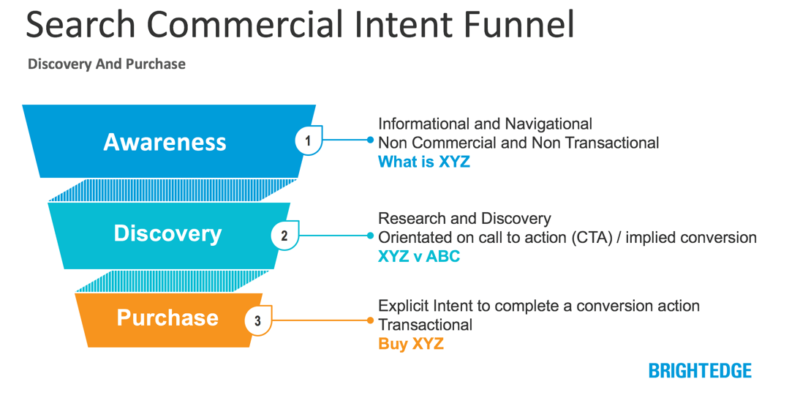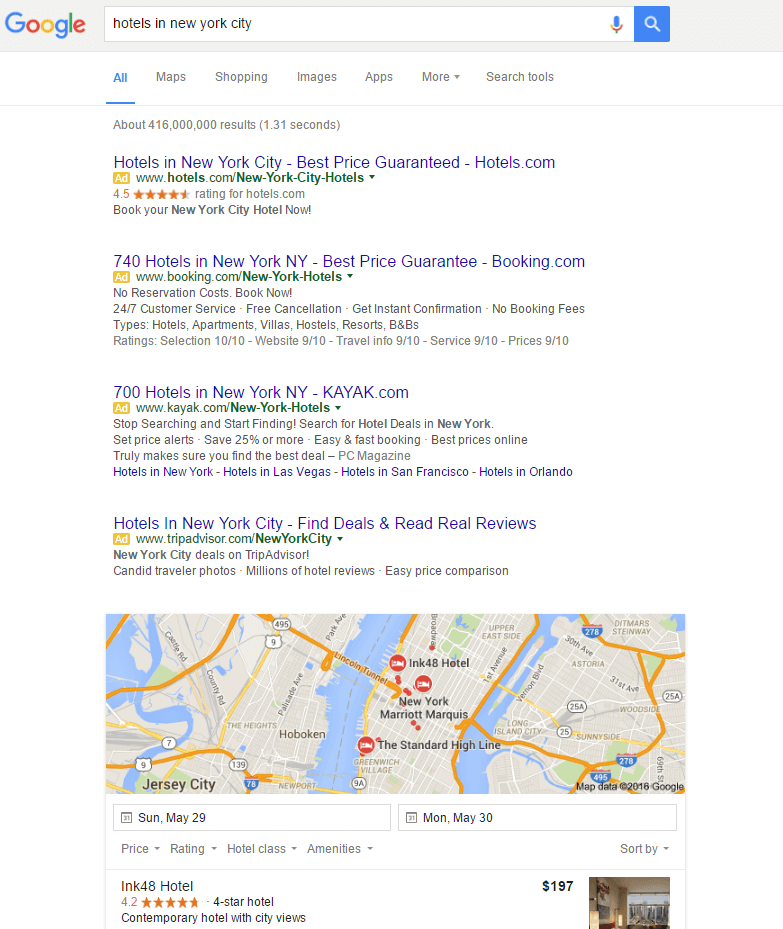Search intent signals: aligning organic & paid search strategy
Columnist Jim Yu explains how understanding searcher intent in regard to the buyer journey can help paid and online search marketers work together more effectively.
With so much of the buyer’s journey happening online these days, brands must have the content in place to meet customers where they are on their purchase journey. To maximize digital return on investment, organic and paid search marketers must understand online commercial intent and combine their efforts to meet and convert customer demand.
As part of this process, search marketers must equip themselves with intelligent data to understand what prospects are doing, then produce (and optimize) content that will resonate and motivate customers through their purchase funnel.
Understanding commercial intent: from discovery to purchase
In the context of search marketing, user intent is inferred from the keywords consumers are searching on. Searcher intent typically falls into one of three categories:
- Navigational: The searcher is looking for a specific website (e.g., “new york times”).
- Informational: The searcher is trying to find a particular piece of information (e.g., “how tall is the ny times building”).
- Transactional: The searcher is looking to make a purchase queries (e.g., “subscribe to ny times”).
Identifying keywords that indicate commercial intent is extremely important to the success of holistic (organic and paid) search marketing campaigns. This keyword data equips marketers with an understanding of purchase behavior, which allows them to produce and optimize content primed for conversion.
When we talk about commercial intent, and for the purpose of this article, there are two main areas where organic and paid search marketers can work closely together: discovery and purchase.
Google better aligns its SERP layout to searcher intent
In February 2016, Google made significant changes to its SERP layout, removing ads from the right side of desktop search results and increasing the number of ads that appear at the top of search results from three to four for some queries.
According to Google, the appearance of the new “4-pack” of ads at the top of the page corresponds to “highly commercial queries.” Some examples of commercial queries include “car insurance” or “hotels in new york city.”
With this decision to show more paid results for commercial queries, it appears that Google is aligning its content to the customer journey, providing a greater number of transactional results for queries with transactional intent.
What does this mean for organic and paid search marketers?
New research from BrightEdge (my company) reveals that:
- 23 percent of all online search topics performed on the Google US search engine now feature the new search page layout with four ads at the top of the page.
- Search queries with purchase (transactional) intent are six times more likely than all other searches to display four ads.
- Search queries with discovery (informational) intent have a 69-percent higher click-through rate (CTR) for the top five search results, as compared to purchase (transactional) intent searches.
The findings show that marketers should align organic search efforts to customer intent. Organic search and paid search marketers should collaborate to target terms where searchers indicate purchase behavior.
The need for organic and paid search alignment
Organic and paid search teams should work together in targeting informational and transactional terms in order to boost ROI for both channels. These teams should understand what content is currently ranking for these terms and design their content strategy to create web pages, blog posts and other content assets that map to what searchers are looking for.
Since searches with high commercial intent will display more ads at the top of the page than other searches, it should come as no surprise that click-through rates on organic search results are lower for these queries. Paid search marketers will want to ramp up their efforts here, as the shift from three to four ads presents an opportunity for greater exposure for transactional terms.
For queries with discovery/informational intent — which produce search results with fewer ads — organic search marketers should focus their efforts on identifying content needs and developing high-performing online experiences to attract and convert more customers.
Conclusion
Digital marketing has become more sophisticated and integrated. To maximize revenue in increasingly competitive environments, marketers must center efforts around understanding and targeting demand, creating and optimizing content and measuring and reporting performance.
Search data and trends provide marketers with insights into the topics and types of content consumers are looking for. Identifying demand and understanding commercial intent signals helps marketers produce content (and formats) that resonates, engages and is mapped to the customer purchase funnel.
This provides a great opportunity for organic and paid search marketers to align their efforts by building and optimizing the right content for the right audience at the right moment on their purchasing journey.
Opinions expressed in this article are those of the guest author and not necessarily Search Engine Land. Staff authors are listed here.
Related stories



